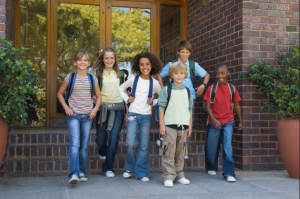National Safety Month – Safety in Many Forms
News · Jun 05, 2017

June marks the official start to summer and National Safety month. It’s a great time to spread awareness and ensure safer environments that can improve students’ social-emotional learning and behavior.
There are different types of safety to consider for children. Below are some suggestions for children and adults to consider this summer, and to remember as they head back to school in the fall.
Emotional Safety: Young people excel in an environment that nurtures healthy relationships with their peers and when they have positive role models in their lives who set examples of appropriate behavior, healthy attitudes, and positive emotional response. Whether it is a parent, a teacher, a counselor, or a coach, our youth need adult figures they can reach out to in times of need.
Peer groups also matter. Young people who are part of a group that values respect for themselves and others are less likely to be bullied and less likely to bully others. Students who can identify and bond with positive peer groups who are positive influences make better, more responsible decisions.
Physical Safety: Supervision and clear communication about maintaining boundaries while in and out of school promotes safe environments in places like classrooms, hallways, lunch rooms, and outdoor areas. Youth who are self- and socially aware and equipped to resolve disputes peacefully are less likely to engage in physical confrontations with others and are more likely to de-escalate conflicts when they arise. Learning environments that emphasize and encourage more peaceful approaches, such as compromise or agreeing to disagree, encourage children to practice resolving differences and respect others despite those differences.
A great resource for more information on staying safe from physical harm is the National Safety Council (NSC) website. Throughout June, the NSC will be sharing tools and topics ranging from First Aid training to teen driving. Be sure to visit them at nsc.org.
Academic Safety: The student bond with school is a strong protective factor that encourages children to interact with each other and their teacher as they learn, motivating them to work hard to reach their goals and resist risky behavior. Students need a safe and supportive learning environment that encourages them to try and to risk failure so they can learn from their mistakes.
As advocates for student learning, teachers, counselors, and parents are in a prime position to create and promote a safe and supportive learning environment that encourages students to challenge themselves to learn. Having high expectations of the students is a big part of this supportive environment. Students who know that the adults in their lives are invested in them and expect them to perform will work harder to meet that expectation.
The more committed we all are in the health and safety of our youth during National Safety Month and beyond, the stronger our community will be. Be sure to show your commitment by visiting toogoodprograms.org to stay on top of what the Mendez Foundation is doing to ensure the safety and healthy growth of our kids through prevention education.